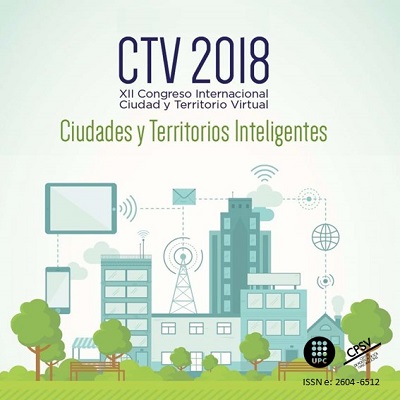Identifying the urban space for locals and tourists through “Foursquare” data in Barcelona
DOI:
https://doi.org/10.5821/ctv.8238Keywords:
tourism, urban space, LBSN, land usesAbstract
Barcelona is an important touristic city in the world. According to Annual Report of Tourism of Barcelona (2014), more than 7.5 million tourists visited here in that year. The studies related to tourism of Barcelona are numerous; however, the comparison of activities and land uses between tourists and locals is scarcely analyzed. In fact, tourism may be a dominant factor of urban development as well as a source of social conflict. Therefore, it is crucial to understand the co-living situation of tourists and residents in a touristic city. The main objective of the study is to identify touristic users and local users through their Foursquare behaviors. Furthermore, it explores the difference of geospatial activities and POIs’ usages between the two groups. The analytical period is from April of 2012 to September of 2013, based on the monitoring span of Foursquare data. After filtration, the total check-ins during this period is 80,936 coming from 4,250 Foursquare users. The POIs of Foursquare are 13,887 in Barcelona. The geographic range of data roughly covers the central conurbation of the Metropolitan area of Barcelona.
The methodology includes four parts. The first step is to select indicators of behavior and standardization. The second step consists of selecting two short-period samples and classifying them into tourists and locals by K-means clustering. After the manual examination of the initial result, a threshold of classification is introduced to improve the result. Finally, the same method of identification is applied to the whole dataset.
According to the result, the difference of POI usages verifies that the identification is effective. It reflects the typical activities of tourists and locals separately in the city. The most visited POIs of tourists are: outdoor resorts, transport, restaurants, hotel, and store. The corresponding rank of locals is restaurants, workplaces, outdoor resorts, educational places, and transport.
Moreover, the two groups appear different Foursquare behaviors, regardless of the length of analyzing period. In general, behaviors of tourists -- the stay duration, number of check-ins, and total travel distance, are smaller than the local group. K-means clustering can effectively identify users who possess the extreme values of attributes. However, it is unavoidable to introduce artificial intervention for users without extreme-characteristics.
Besides, the geospatial distribution and active time also embody differences between locals and tourists. In terms of movement scale, tourists seem more concentrated than the residents. With regard to the active time, tourists’ active period is similar every day. On the contrary, locals show an evident periodic variation daily and weekly.
It is undeniable that this paper has several limitations. Firstly, Foursquare data has bias. The high proportion of check-ins is restaurants because Foursquare aims to provide practical information about places for users. What’s more, the lack of demographic information of users also limits the scope of the study, due to the privacy policy.
In sum, this study demonstrates that it is possible to distinguish tourists from locals via Foursquare data, though the uncertainty of data is recognized. How to improve the accuracy of the unsupervised identification and cooperate with other datasets will be the object of further investigation. Furthermore, whether the identification model can be universally applied is another issue that is worth to test in the future.























